












LGBTQ+ parents
LGBTQ+ parents detail the reality and challenges in their parenting experiences.03
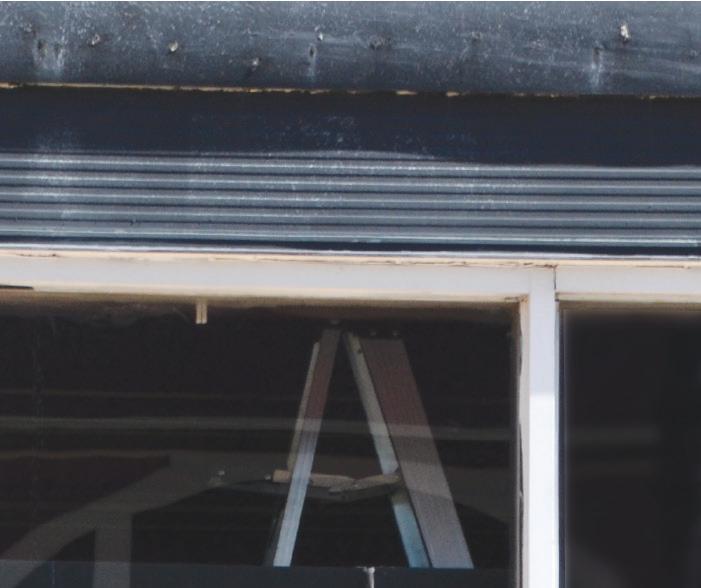
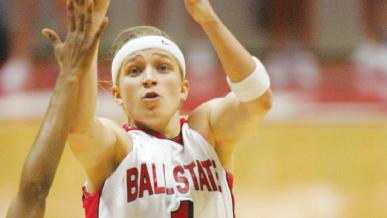
Progression of acceptance
Past LGBTQ+ Ball State athletics personnel reflect about their experiences.08
Leading with a hug
The Free Mom Hugs organization strengthens the communities it is involved in.15


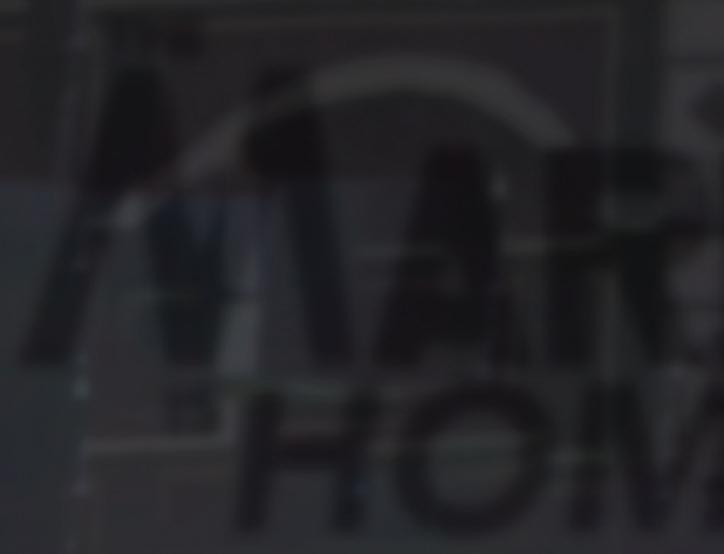

Break the binary
The stigma around the nonbinary identity harms nonbinary individuals. 16




04.18.2024
DAILY NEWS
DN
@bsudailynews
HOME
ballstatedailynews.com THE IS
reflects on the Mark III Tap Room and its sudden closure.
LGBTQ+ Pride DN The Muncie LGBTQ+ community
04
TINA BOLTE, PHOTO PROVIDED ‘ ’
The Mark III Taproom sits empty April 6 in Muncie. The bar originally opened its doors in 1968. TRINITY REA, DN
BallStateDailyNews.com
CREATING CONVERSATION
We want to create a space for discussion and community in Delaware County.
Ball State Daily News Editorial Board
We recognize as student journalists that it is important to remain neutral in the ways of political discussions and lawmaking. However, we will always take a stance on the importance of telling truthful, journalistic stories that can shine a light on those affected by legislation — no matter what that legislation may be.
When evaluating our goals for this academic year, one thing remained true for our editorial team: to tell the stories that mattered to our readers and stories that made a difference in our community. We’ve noticed the increase in anti-LGBTQ+ bills that are proposed and passed in Indiana legislation every year. It’s important to us that students are aware of these topics.
We also know that Ball State University and Delaware County, like many other communities, have a vibrant history and connection to the LGBTQ+ community.

Muncie is home to different important LGBTQ+ spaces, like the Mark III Taproom, Indiana’s oldest gay bar, a growing drag community and organizations like Muncie OUTreach and Queer Alliance. Within Delaware County, LGBTQ+ individuals have made a lasting impact on the history and stories of our community.
Day of Silence, started in the 1990s by two college students who wanted to bring attention to the lack of LGBTQ+ inclusivity in universities, K-12 schools, legislative bodies and communities as a whole, took place April 12 this year.
This April, we want to acknowledge the importance of those lost to hate, but we also want to take the chance to uplift and share the experiences, challenges and achievements of those whose stories can be told. We hope this issue of our paper can add to the promotion of equality, visibility and inclusivity for the LGBTQ+ community.

Follow the DN socials

Ian Kowalski, Weather forecaster, Benny Weather Group 4-DAY WEATHER FORECAST
THURSDAY

MOSTLY SUNNY Hi: 74º
Lo: 50º
STORMS AND SUN Hi: 58º
Lo: 41º
FRIDAY MOSTLY SUNNY Hi: 54º Lo: 36º
SATURDAY MOSTLY SUNNY Hi: 55º Lo: 36º SUNDAY
THIS WEEK: The end of this week will not be as warm as the last with temperatures being in the high to mid 50s. Expect thunderstorms Thursday evening into Friday with gusts in the high 20s. The weekend will be pleasant with mostly clear skies and mid 50s temperatures.
START CHECKING, FROM DAY ONE.

Waking Up with Cardinal Weather is Ball State University’s first and only morning mobile show focused on getting your ready for the day through local news, weather and lifestyle trends. Waking Up with Cardinal Weather airs every Friday morning at 8 a.m. at @cardinalwx live on Facebook.
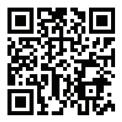



The Ball State Daily News (USPS-144-360), the Ball State student newspaper, is published Thursdays during the academic year except for during semester and summer breaks. The Daily News is supported in part by an allocation from the General Fund of the university and is available free to students at various campus locations. VOL. 103 ISSUE: 30 CONTACT THE DN Newsroom: 765-285-8245 Editor: 765-285-8249, editor@bsudailynews.com EDITORIAL BOARD Daniel Kehn, Editor-in-chief Kyle Smedley, Print Managing Editor, Co-Sports Editor Olivia Ground, Digital Managing Editor Grayson Joslin, Director of Recruitment Trinity Rea, Associate News Editor Katherine Hill, Associate News Editor Elijah Poe, Co-Sports Editor Zach Carter, Associate Sports Editor Hannah Amos, Lifestyles Editor Ella Howell, Associate Lifestyles Editor and Copy Editor Kate Farr, Opinion Editor Elaine Ulsh, Associate Opinion Editor Jacob Boissy, Video Editor Oakley Myers, Social Media Editor Mya Cataline, Photo Editor Andrew Berger, Associate Photo Editor Meghan Holt, Visual Editor Jessica Bergfors, Visual Editor Brenden Rowan, Visual Editor Maria Nevins, Podcast Editor Terry Heifetz, Interim Adviser TO ADVERTISE • (765) 285-8256 or dailynewsads@bsu.edu • Hours: 8 a.m.-5 p.m. Mon-Fri. • ballstatedaily.com/advertise TO SUBSCRIBE Call 765-285-8134 between 9 a.m. and 3 p.m. Mon. -Fri. Subscription rates: $45 for one year. POSTMASTER: Send address changes to Daily News, AJ278, Ball State University, Muncie, IN 47306 JOIN THE DAILY NEWS Stop by room 278 in the Art and Journalism Building. All undergraduate majors accepted and no prior experience is necessary. CORRECTION The Ball State Daily News is committed to providing accurate news to the community. In the event we need to correct inaccurate information, you will find that printed here. To submit a correction, email editor@bsudailynews.com. DNLGBTQ+ Pride 04.18.24 02
DEFERRED ‘DREAM ’





LGBTQ+ parents share their realities of parenting under the LGBTQ+ identity.
Olivia Ground Digital Managing Editor
Courtney Greyhawk always wanted to be a mother.
Yet she was taking all the steps to avoid a pregnancy with her former partner. She was taking birth control, and they were using condoms. Even with those precautions, Greyhawk found out she was pregnant.
In 2009, Greyhawk was in her fourth year at Ball State University, majoring in biochemistry. She found out at the Ball State Health Center and called her partner before taking an exam.
“I remember being like, ‘I can’t think right now. I just have to do this test,’” Greyhawk said. The couple was pulled in different directions as the two realized they had three options: become parents, abort the pregnancy or put their child up for adoption.
Greyhawk wanted to keep the baby, noting abortion was not something she felt comfortable doing at that time of her life. She was faced with the reality of being young and in college, unable to raise the child on her own.
As a result, the couple turned to adoption.
A few months later, Greyhawk and her boyfriend had yet to officially notify the adoption agencies they were interested in, citing that they
I’m holding this beautiful baby, and I’m thinking, ‘How could I let this go?’
I’ve got these beautiful people who are going to be beautiful parents, [but] how do I let this go?’”
- COURTNEY GREYHAWK, Birth mother
didn’t want to let anyone know too soon in case they lost the baby.
Then, before spring semester finals week, Greyhawk and her friends were discussing life and classes. A friend of a friend had just broken up with his boyfriend.
“He’s like, ‘I’m never going to have that white picket fence and a family and a partner,’” Greyhawk said. “I definitely read that as, ‘I’m never gonna find my love,’ and he’s like, ‘No kiddo, you don’t get it? ... I’m a gay man. Nobody wants to give us a baby.’”
That resonated with Greyhawk. As she and her boyfriend started to consider adoption candidates, she knew she wanted her baby to be adopted by a gay couple.
“It’s much harder for [gay men] to adopt, and selfishly, I would always be the baby’s mom,” Greyhawk said. “To be very selfish, I wouldn’t have to give that up. I wouldn’t get to keep the baby, but I would still always be there — the only mom.”
Greyhawk also said a reason for her decision to adopt with gay men rather than gay women is based on her knowledge that gay women often have an easier time finding an affordable way to have a baby.
See DREAM, 06
President Joe Biden’s latest plan for student loan cancellation is moving forward as a proposed regulation. The Education Department filed paperwork April 16 for a new regulation that would deliver the cancellation. The motion has to go through a 30-day public comment period and review before it can be finalized.
AP: Indiana limits abortion data
Indiana allows so few abortions that health officials stopped releasing individual reports to protect patient privacy. Candidates for office this year want access to reports detailing each abortion performed in the state. Advocates for abortion rights and state officials warn this would jeopardize the privacy of physicians and patients.
National State State AP: Student loan cancellation
Two broods of cicadas to emerge
In the coming weeks, a 13-year brood of cicadas, alongside a 17year brood, will emerge across the eastern half of the U.S., including Indiana, according to Scientific American. The emergence of two broods at once is extremely rare, and the next time this phenomenon will occur is the year 2037 in North Carolina, Virginia and West Virginia.
ON BALLSTATEDAILYNEWS.COM: GLOBAL HARMONY HOSTS SONGKRAN FESTIVAL DNLGBTQ+ Pride 04.18.24 03
OLIVIA GROUND, DN ILLUSTRATION
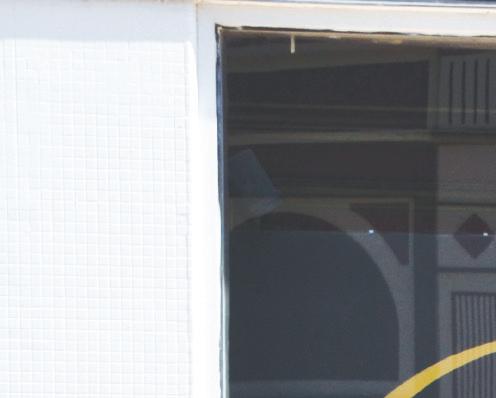
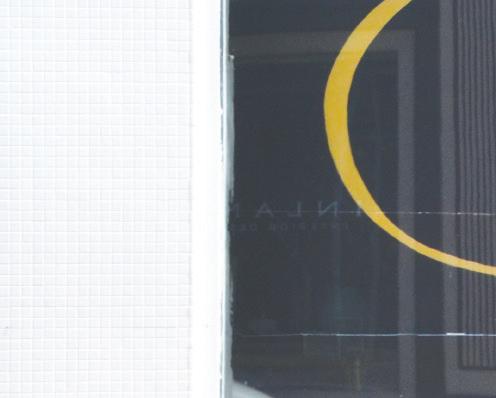

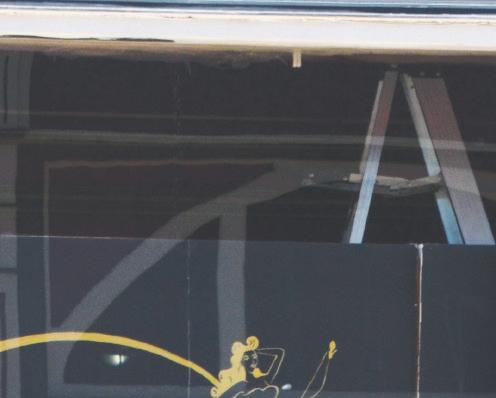
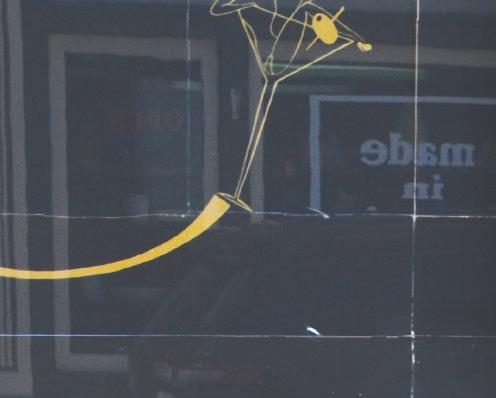






The closure of the historic Mark III Tap Room impacts Muncie’s LGBTQ+ community.
 Meghan Holt Visual Editor
Meghan Holt Visual Editor
“Come a stranger, leave a friend” brands the doors of the Mark III Tap Room, known colloquially as “the Mark” in downtown Muncie, Indiana.
Established in 1968, the Mark is the state’s oldest gay bar.
Since its initial opening, the bar has moved buildings, closed and reopened multiple times while going through ownership changes. Regardless of these hurdles, the Mark III name remained a staple of Indiana and the Muncie LGBTQ+ community.
After a pipe burst in its 306 South Walnut Street location in January 2024, the Mark III Tap Room faced water damage, leading to its closure for the foreseeable future. Access to the bar’s resources, performances and community outreach have been lost.
For performers like Olivia Ward and Jamie Prang, the Mark was not only home to a source of income and creativity — it was home to family, making the closure of the bar difficult to navigate. “My creative outlet is gone right now,” Prang said. “Now, I don’t have anything.”
Prang is a founding member of the eight-yearstrong burlesque troupe “The Fabulous Funcie Femmes” and has managed the production house “House of Mayhem” since 2020. Within the troupe, she takes on the persona of Lady J, Mistress of Mayhem.
“The Mark is very, very, very precious to me, especially as a performer and entertainer,” Prang said. “As a burlesque dancer in this town, [burlesque] had its own stigma that people [have] their own opinion about, and [the Mark’s owners] were the brave souls who were willing to give us a chance.”
I’ve lived in Muncie my entire life. I went out one night and it changed my life. The Mark is home.”
- OLIVIA WARD, Performer
The burlesque troupe did not take off thanks to Prang’s efforts alone. The foundation of the troupe coincided with the opening of the Mark’s building on 306 Walnut Street.
Prang remembers the opening day fondly and said the bar was instrumental in ensuring the survival of the troupe.
Ward echoed Prang’s sentiment about the importance of the Mark within their own life.
“I’ve lived in Muncie my entire life. I went out one night, and it changed my life. The Mark is home,” they said.
A Muncie native and Ball State University graduate, Ward competitively danced for 15
years and was head of Ball State’s Outlet Hip Hop Troupe. After graduation, they were a hip hop fitness coach. Although dance came easily for Ward, they needed encouragement to get into drag performance.
“I’d always wanted to do [drag], but [Prang] said, ‘Hey! You’ve done this, so here’s the next step,’” Ward said, gripping Prang’s hand.
Prang’s tenure at the Mark, combined with the bar’s welcoming atmosphere, launched Ward’s career as drag king Tevin L. Cruz, a “high-energy” persona who “enjoys being a part of the crowd.”
The Mark is sentimental specifically to Ward and Prang. Alongside the fact that they each got their start at the bar, it’s where they met and began their relationship almost three years ago.
“We hold this place very, very dear to our hearts. These are our family members. They’re not just people we work with,” Prang said.
Ward misses being on stage — but more than that, they miss supporting other performers.
“It’s the nights we weren’t in shows that I miss because every crowd is different. What you’re going to see at a burlesque show, you’re not going to see probably half of those people at a drag show, or a Sunday brunch, or a Friday karaoke night,” they said.
DNLGBTQ+ Pride 04.18.24 04
The Mark III Taproom sits empty April 6 in Muncie, Indiana. Due to a burst pipe in January, water damage has forced the bar to close and commence repairs. TRINITY REA, DN

Indianapolis-based performer Hails Sherwood also lamented the closure of the Mark III Tap Room as a former Ball State student and current drag performer.
“Coming to Muncie, I hadn’t started the process of coming out as anything yet,” Sherwood said. “[The Mark] definitely helped set the groundwork for learning what a queer community is.”
Sherwood’s performances at the Mark under the name Luna Magick brought them closer to their idols. They described being starstruck by another Indiana drag queen, Venus Entertainment.
“You know, meeting somebody who inspired you to start [performing] is insane. It’s a weird thing being starstruck by an Indy local, but being performers, we do that. It’s absolutely opened up new opportunities for me,” Sherwood said.
The Mark doesn’t just serve as a place to build community. Sherwood also praised the ability of the bar to provide free HIV testing to their patrons. In the past, the bar has also hosted fundraising shows for various organizations in Muncie and around the state.
Though Sherwood no longer frequents the Mark as much as they used to, they extend their sympathy to the Muncie community for its loss. Sherwood said students now lack a space away from work, school or home where they can build community and get away from the bustle of campus life.
“Being able to get away from [campus] was nice. I feel for the people that are there now … and don’t have that queer space away from campus that is not affiliated to truly shut off the student part of your brain,” Sherwood said.
But the loss is perhaps felt most acutely by the Mark III Tap Room’s owner, Natasha Martz. She has owned the bar since 2012, but it has been a part of her family for much longer.
“The Mark has been a part of my life for as long as I can remember,” she said via email. “[My] dad loved going to the first Saturday shows. In the late ’90s, when I turned 21, it became [his] and I’s ‘Dad and Daughter’ monthly night out spot.”
Martz’s uncle was also a frequent patron of the bar and introduced her father to the establishment. Due to this extended family connection, Martz said the closure of the bar has affected her life tremendously.
“[The Mark] is not only my career, but it is my heart and my passion. Navigating as a small business through a crisis that keeps you from being open is very challenging. Knowing that it is a much-needed space for our community is a driving force for me,” Martz said.
The Mark is still closed for repairs, missing its targeted date for reopening in early March. As of now, there is no update about whether or not it will reopen. Regardless, Martz is proud to be a part of its legacy.


“From a tiny dance floor on Main packed with friends and laughter, to a grand stage on Walnut full of performance art and creative minds, I am lucky to have witnessed so much happiness and joy,” she said.
Contact Meghan Holt via email at mlholt@bsu.edu.
Associate News Editor Trinity Rea contributed to this story.
We hold this place very, very dear to our heart. These are our family members. They’re not just people that we work with.”
- JAMIE PRANG, Performer
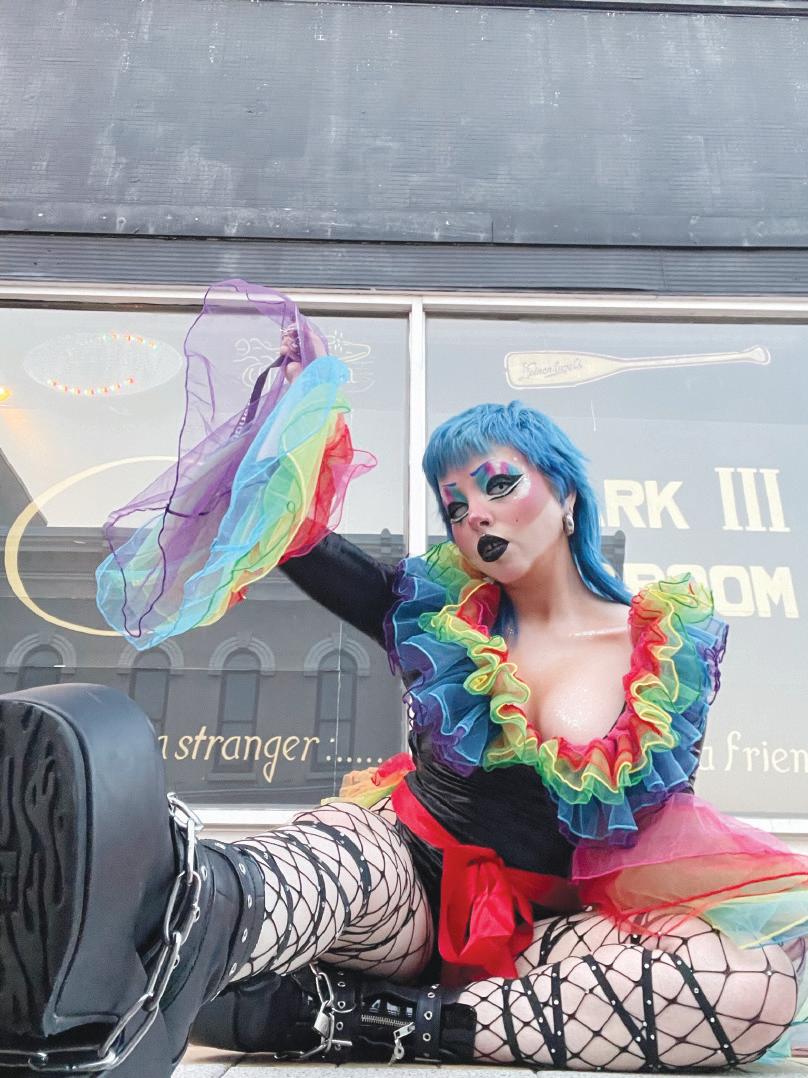
Drag performer Hails Sherwood, also known as Luna Magick, poses for a selfie outside the Mark III Taproom June 17, 2023. HAILS
DNLGBTQ+ Pride 04.18.24 05
SHERWOOD,
PROVIDED
PHOTO
Due to a rise in anti-LGBTQ+ legislation nationwide, LGBTQ+ parents find a new challenge in their parenthood.
DREAM
Continued from Page 03
Greyhawk began to sort through potential adopting couples. She was in hopes for an open adoption — one that would let her still connect with her daughter — despite her not having rights as a parent.
“Adoption isn’t ‘OK, you have the baby it’s over,’ it’s an 18-year commitment like raising a child,” Greyhawk said. “You just have no say in the decisions — you’re watching from the sidelines.”
The Lifelong Dream
Charlize Jamieson is no stranger to the lifelong commitment of raising children.
Jamieson has three adult children of her own. The biggest achievement of her parenting was knowing she raised them right when she started to publicly transition and come out to loved ones as transgender in her early 60s.
Jamieson said she always knew she was transgender but said the “different time” she grew up in kept her in the closet for more than 60 years.
“You just didn’t talk about things like [being transgender]. You’d be institutionalized,” Jamieson said. “You just kept it quiet, and I thought, ‘I’m just gonna take this my little secret to the grave, and I won’t tell anybody ever,’ [but] you can’t hide something like that.”
The fear of coming out, especially after holding such a vulnerable secret for so long, was very real for Jamieson.
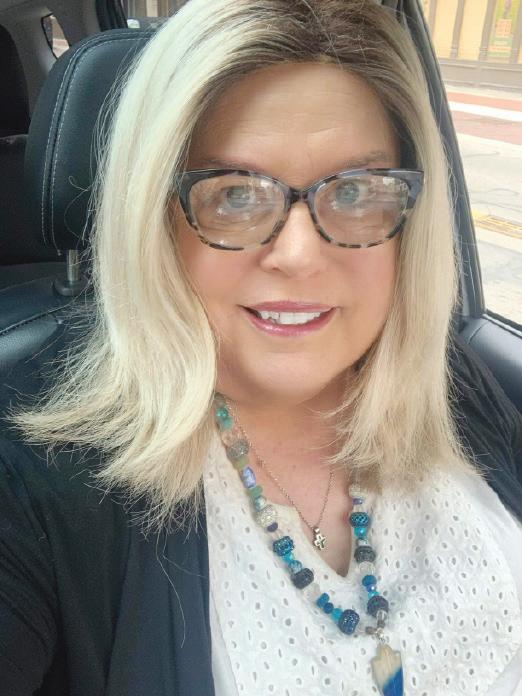
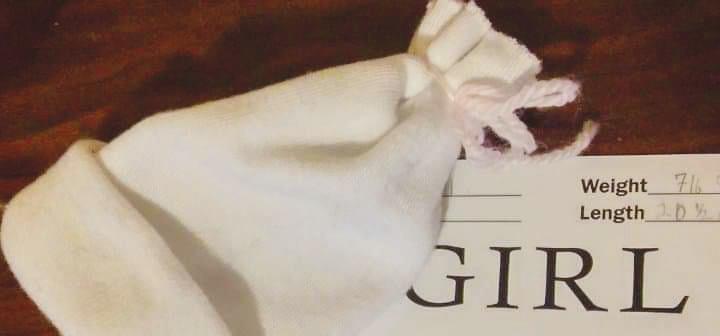
“I thought it would be nothing but disaster because I know a lot of people here in town, and I said, ‘I’m going to lose friends and respect and family,’ and I haven’t lost anything,” she said.
Jamieson said telling her kids was one of the scariest parts of coming out, but she was pleasantly surprised and proud of their reactions.
While Jamieson had her children in a straightpassing relationship at the time, she noted the importance of adoption. She, herself, was adopted, but with their current identity, the importance of LGBTQ+ individuals having access to adoption is even more important.
“There’s absolutely no reason lesbians can’t be great parents or two gay men can’t be great parents,” Jamieson said.
The Dream in Progress
Greyhawk found a couple who provided the open adoption relationship she was looking for and began connecting with them online through the adoption agency.
The couple welcomed Greyhawk and her boyfriend with open arms, allowing them to be a part of the parenting process.
They even let Greyhawk pick out the middle name of the child.
The adoptive fathers threw a baby shower for them all, something Greyhawk noted was not recommended by the adoption agency due to the potential of creating “false hope” in the couple and their families.
Regardless, it was something the couple wanted to celebrate together because of how much they cared for Greyhawk.
They also financially supported Greyhawk during the pregnancy. At the time, she was working night shifts at McDonald’s in addition to her school work. She said the financial support was for both her and the baby’s well-being.
Greyhawk said the love and gratitude received by the adoptive family was immense. The sister of one of the fathers even gave her a square from a baby blanket she crocheted.
Greyhawk still has all of the sentiment in a special box where she holds keepsakes from her daughter.
Greyhawk’s daughter was born October 31 in the late 2000s after she went into early labor on her way to Cooper Science Building. She’d attended a campus Halloween party that same evening dressed as Mother Earth before heading to the hospital and giving birth later that night.
Before signing adoption paperwork, participating families are separated for the night and part of the next day to give the birth mother any opportunity to change her mind, Greyhawk said.
“I’m holding this beautiful baby, and I’m thinking, ‘How could I let this go? I’ve got these beautiful people who are going to be beautiful parents, [but] how do I let this go?’” Greyhawk said.
That night, the baby started fussing. Greyhawk just went through a long and painful labor that ended with 65 stitches. She was a tired college student. She was unable to nurse her child, and she couldn’t get up to hold her. Her boyfriend got up and left to sleep elsewhere.
4See DREAM, 18
The reality of LGBTQ+ parenting:
FLEXIBILITY CREATIVITY INTENTIONALITY
of LGBTQ+ individuals want to have a family. This attitude is becoming more prevalent due to increased resources to make parenting a reality.
LGBTQ+ parents demonstrate these traits, all of which are related to a child’s resilience and positive outcomes.
Sources: Movement Advancement Project, familyequality.org, University of Kentucky
of LGBTQ+ adults older than 25 that are raising children.
DNLGBTQ+ Pride 04.18.24 06
A baby hat sits on top of a birth certificate in 2009. COURTNEY GREYHAWK, PHOTO PROVIDED
Charlize Jamieson poses for a selfie. Jamieson is a parent of three children and started her public transition after her kids were grown. CHARLIZE JAMIESON, PHOTO PROVIDED
MEGHAN HOLT, DN DESIGN


‘NOT HAVING TO HIDE’


Current Ball State LGBTQ+ athletes share their stories about being out on the athletic stage. 10
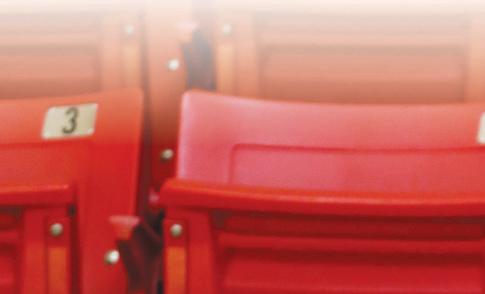



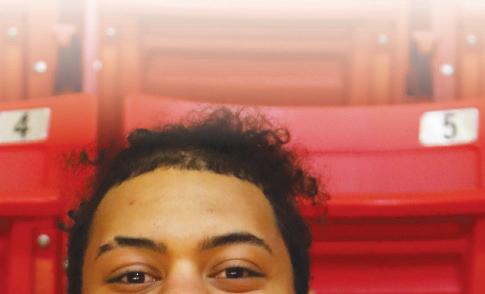

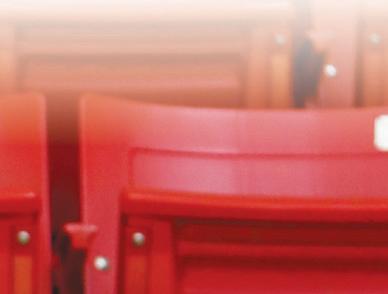





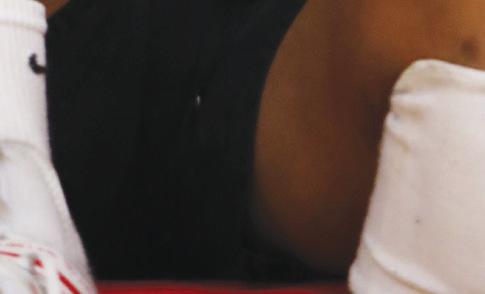

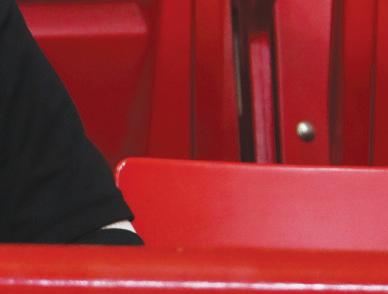



Baseball
Dobbins named MAC Player of the Week
This is the fourth week in a row that a Ball State baseball player has earned Player of the Week honors. This past week, junior catcher Hunter Dobbins caught all three games with a perfect fielding percentage and was .889 (8-for-9) from the plate.
Track and Field
Just a week removed from hosting the We Fly Challenge, the Cardinals travel to Ohio State to take part in the Jesse Owens Classic. The competition will start April 19 with field events at noon. The following day, the events are scheduled to start at 10 a.m. This will be the second to last meet for the Cardinals before the Mid-American Conference Championship.
Men’s Volleyball
Ball State heads to Ohio State Cardinals host Lindenwood in MIVA
After sweeping Queens in the first round of the Midwestern Intercollegiate Volleyball Association (MIVA) tournament, Ball State will host Lindenwood in the quarterfinals April 8. The winner of the match will go on to face the winner of Loyola Chicago vs. Ohio State. First serve in Worthen Arena is scheduled for 7 p.m.
ON BALLSTATEDAILYNEWS.COM: BALL STATE SOFTBALL SWEPT BY MIAMI IN DOUBLEHEADER
DNLGBTQ+ Pride 04.18.24 07
Freshman libero Cameron Gray poses for a photo April 11 at Worthen Arena. “Now that more people are starting to come out, it is just the culture of the sport — caring, open, accepting and supportive,” Gray said. MYA CATALINE, DN
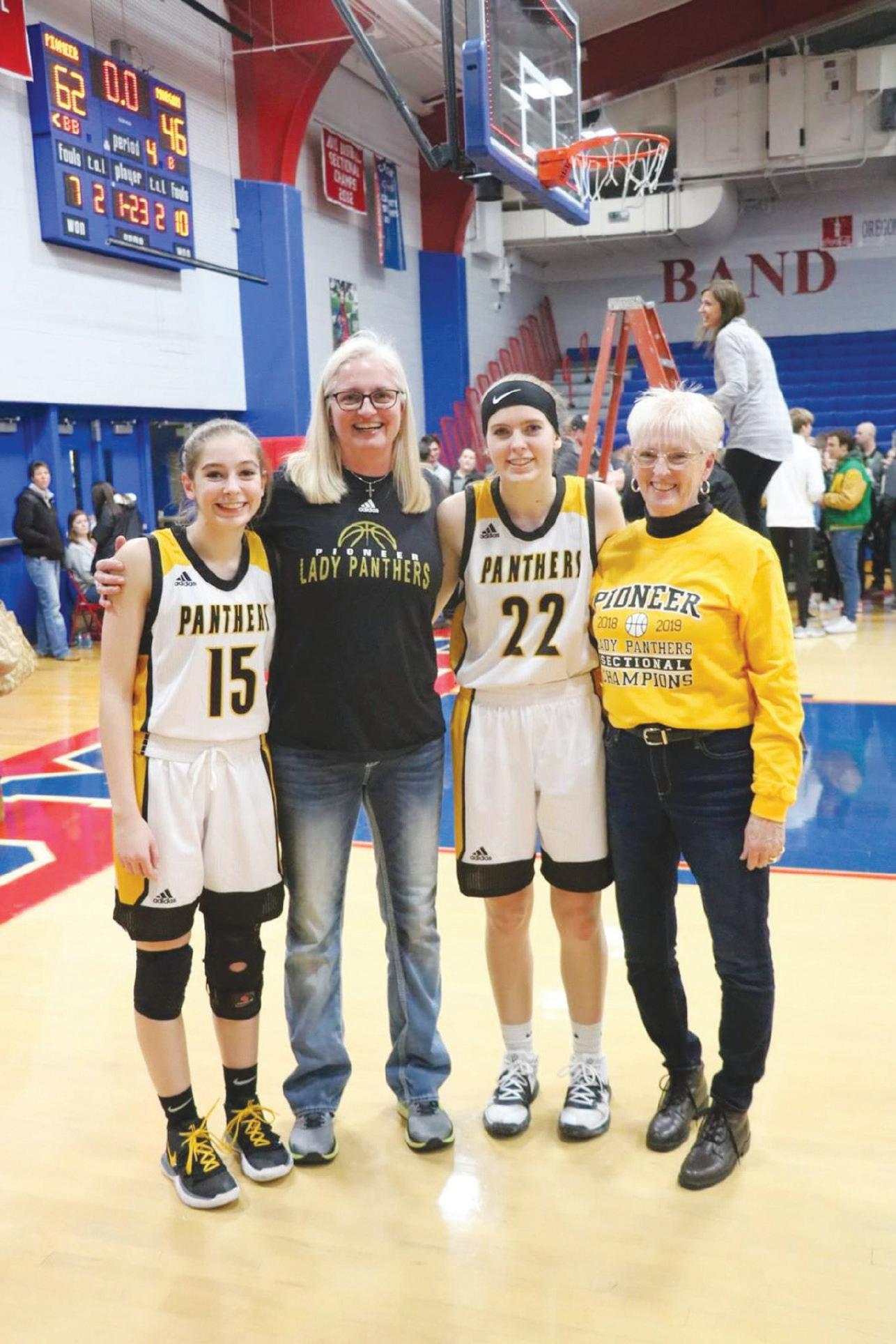
Stifling the
Stigma
Being a member of the LGBTQ+ community comes with peaks and valleys, especially for these former Ball State athletes and staff.
Kyle Smedley, Elijah Poe, Caleb Zuver Co-Sports Editor and Print Managing Editor, Co-Sports Editor, Reporter
For many, finding an identity as a member of the LGBTQ+ community is liberating. For Tracy Roller, it was like going through the wringer for nearly three decades.
The former Ball State women’s basketball head coach officially resigned from her position April 2, 2008. However, she missed much of the 200708 campaign due to her ongoing alcoholism and mental health issues.
Roller said many of these problems were brought on by the mental game of seesaw she was playing with revealing her sexuality to the public.
“It probably would have destroyed my recruiting because, at that time, people were ruthless,” Roller said. “For them to say, ‘I can’t come to your school because my parents won’t let me.’ I just couldn’t handle that.”
Roller felt she had to walk on eggshells and hide her identity as a lesbian from the Muncie community due to fear of negatively affecting the Cardinals. She even sacrificed an ongoing relationship for the same reasons.
“I had other guys I knew were gay using it against me because it was almost safer to go play for a gay man — in a parent’s eyes — than it was to come and play for someone who could recruit you for ‘the lesbian team,’” Roller said. “Of course, no one ever said that to my face, but in my mind, I knew that was happening.”
In her mid-30s at the time, Roller had known about her identity for more than a decade despite not being fully out.
“I didn’t know how I felt about it until I kissed my first girl, and then it was like, ‘Wow, this is different,’” Roller said. “I didn’t want people to find out. I was embarrassed about it, and that’s when the drinking started ... I was a train wreck in college, mostly because I was embarrassed about my sexuality.”
Even as a key player for Eastern Illinois’ women’s basketball during her four years as a Panther, Roller’s alcoholism continued. Roller said it may have encouraged it.
Her drinking became an addiction. Roller began sneaking alcohol into classes and even the locker room before games.
In 1999, Roller was hired as an assistant coach for Ball State women’s basketball. However, she missed the Cardinals’ first practice of the season after receiving a DUI on the way home from a gay bar in Indianapolis the night before. Roller spent that night at a jail in Anderson, Indiana.
It took Roller five years to get sober after leaving the program in 2008, officially beginning her sobriety in 2013. However, she still feels like she let the program down 16 years ago.
“If I was able to mentally and emotionally take on that stress and pressure, I would be at Ball State,” Roller said. “I could not let that part of me get proven right. Alcoholism, mental health and my sexuality were the three reasons why I stepped away.”
Roller feels many members of the community could have guessed her sexual identity, but with no proof, she felt more secure. Now, in her role as a personal banker at FlagStar Bank in Peru, Indiana, Roller said she is “way out.” What’s more, she is comfortable in her own skin.
I have to say, more recently, we feel a little less like things are so accepting. I think the culture has moved forward, but I also think it has taken a slight step back.”
- TINA BOLTE, Former Ball State women’s basketball player
DNLGBTQ+ Pride 04.18.24 08
Tracy Roller (middle left) poses for a photo with Ashlynn Brooke (far left), Olivia Brooke (middle right) and Sue Roller (far right) at Canton High School in 2021. Roller is a former Ball State women’s basketball head coach and Ashlynn is currently on the Cardinals’ women’s basketball team. TRACY ROLLER, PHOTO PROVIDED
“It seems like we’ve gone backward in the whole thing with people [not] being open to differences of other people. You can have all this noise going on, but it’s up to yourself to decide who you’re going to be and how you’re going to act.”
- ANDREA SEGER, Former Ball State director of athletics
Kiley Jarrett remembers going to a Puerta Vallarta in Muncie after a Ball State women’s basketball game during her freshman season with her mother and sister. She finally felt ready to open up about her sexuality and was greeted with nothing but support.
Coming out to her family was never much of an issue for Jarrett given her close bond with her close relatives. The Bloomington native said she had had a partner for a couple of months at the time and was ready to introduce them to her family; she didn’t want to hide anything.
When it came to letting her teammates know, that was even less of a concern for Jarrett, as she estimated nearly 50 percent of the Cardinals’ roster and staff identified as gay at the time.
“It was no different than a heterosexual [person] having a boyfriend,” Jarrett said. “We were extremely close with one another; we were like family, so it really wasn’t a big deal.”
Former Ball State women’s basketball player Tina Bolte said it was hard coming out, but the bonds and trust she had with her teammates helped solidify stronger relationships.
“There was still a stigma about it as far as where you were regionally,” Bolte said. “Within our program culture, the initial coming out part was maybe harder [than it is now]. I had teammates that were gay, but everybody accepted everybody for who they are.”
During Jarrett’s four seasons with the program, at times playing alongside Bolte and for Roller, Jarrett said she never felt like she couldn’t be her true self around her teammates. Jarrett couldn’t even recall a single instance of prejudice against her sexual identity while she was in college. She realizes many other members of the LGBTQ+ community aren’t so lucky and wants to continue fostering conversation surrounding LGBTQ+ issues to establish normalcy for the topic further.
“Who someone chooses to love is only really that person’s business; it doesn’t affect anyone else,” Jarrett said. “If people could take a step back and realize if they choose to love someone, and they’re free to do so, then why can’t someone of the LGBTQ+ community not have that same opportunity without being criticized or looked at differently?”
Although Ball State Athletics Hall of Famer and former director of athletics Andrea Seager doesn’t identify as a member of the LGBTQ+ ommunity, she is a proponent of athlete diversity and equality. She said during her near tenure at Ball State from 1983-2002, she doesn’t remember many conversations being had at the administrative level about the treatment of LGBTQ+ athletes. Seger said Ball State athletics’ main objective at the time was making the student-athlete experience enjoyable for as many as possible with the only structured programs in place being for athletes of
color or women’s athletes. Seger said she was certain there were athletes or staff who were in the LGBTQ+ community, but she and most in Ball State athletics’ higher regime tried to stay out of student athletes’ personal lives.
In 1993, the NCAA established a certification program throughout Division I athletics, mandating college athletic departments to have programs promoting equality and diversity in writing.
Seger even said she felt there may have been the possibility of some students from small towns coming to Ball State who had never been exposed to members of the LGBTQ+ community or people of color. She said athletics tried to play a part in making sure they could change that for new students.
“It was an excellent experience for our athletes to be able to interact and become friends with teammates and students that were different than them,” Seger said.
Seger said Ball State athletics should have done more to actively support and encourage gay athletes during her time in Muncie.
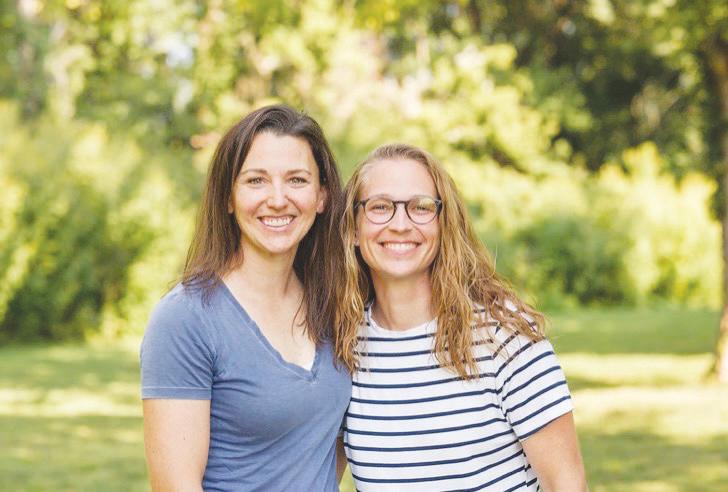
“I think, maybe, we did a disservice to the LBGTQ+ students,” Seger said. “I think sometimes we tend not to pay attention if there’s not people coming forward and saying, ‘We need this.’”
Kelsey Corbin was a Cardinal with Bolte and Jarrett from 2003-2007. In Corbin’s eyes, the locker room of a sports team is a microcosm for society.
“It’s not just about sexuality — it’s about the differences in socioeconomic status, the racial differences, the differences about how we grew up, and what we think and how we view the world,” Corbin said. “That is an invaluable training ground for anyone in life.”
The relationships Corbin made in the locker room by being her most vulnerable and authentic self are bonds she still cherishes today.
“All these people who went through this very formative time [for me], are still the people that are my best friends now,” Corbin said. “You couldn’t ask for anything better.”
Corbin said before she came out to her family, friends and teammates, there had to be selfacceptance first. She described her process of coming out as a long evolution, which is why she wasn’t fully herself until she got out of school.
“Until you’ve really accepted it yourself, I’m not really sure that I knew 100 percent that was my sexuality. I toed the line there for a while, not really willing to admit [it],” Corbin said.
It was when she moved to Atlanta, Georgia, that Corbin said she started to own who she was. With a fresh start in a new city, she felt comfortable being open about her sexuality. In Atlanta, she met her wife of three years, Katie Adams.

DNLGBTQ+ Pride 04.18.24 09
Tracy Roller, former Ball State women’s basketball head coach, gives advice to then-senior Kelsey Corbin at Worthen Arena in 2007. Roller was the head coach for the Cardinals from 2001-2008. SUE WILDEN, PHOTO PROVIDED
Tina Bolte (right) poses with her wife Kate Achter (left) for a photo August 2022. Bolte is a former Ball State women’s basketball player and graduated in 2007. TINA BOLTE, PHOTO PROVIDED
4See STIGMA, 12

Whether it be members of women’s basketball, men’s volleyball or any other, Ball State athletics is continuing to foster a safe space for its LGBTQ+ community.
, Reporter
If Estel Puiggros is walking through downtown Muncie with her partner, someone is looking.
“There are always those moments that it is like, ‘I hope they are not staring at me because of this.’ But they probably are,” Puiggros said.
Puiggros, a senior women’s basketball player, is one of many LGBTQ+ athletes playing for Ball State University. Although she never has had issues on the Ball State campus, her sexual orientation has caused concerns off campus.
If she is with donors or families, she said she never knows if she is able to be fully out with them. Puiggros said she has been through many unsure situations but, regardless, she said she knows her
“I am not going to be like, ‘Oh yeah, I love women,’ but I am not going to hide it,”
As an athlete who is openly out, Puiggros said there isn’t a difference between being a gay athlete and a straight athlete. Regardless of sexual orientation, she always felt included like
“I have grown to be this person, and I know who I am,” Puiggros said. “I do not really care what
Within the Ball State women’s basketball program, Puiggros said support is constant.
“We know what is going on with everyone, and nobody is going to judge you on whoever you like, love or want to be with,” Puiggros said. “It is nice to be surrounded by people who are encouraging and being like, ‘We support you,’ or ‘We are proud of
When Puiggros has had encounters or issues, she said her teammates have been there for her showing her their love and support.
“Every single person on that team is family,”
Much like the family environment on the women’s basketball team, men’s volleyball freshman libero Cameron Gray said the “roster top to bottom has been nothing but loving and caring.”
“Men’s volleyball is a sport that does have a good amount of LGBTQ+ people, so over the years it has gotten very normalized,” Gray said. “ Now that more people are starting to come out, it is just the culture of the sport — caring, open, accepting
Gray said he hasn’t feared being himself during
Junior libero Xander Pink isn’t shy about being himself either. When he introduced himself to his teammates and new friends as a freshman, he let them know he was gay early on. He found people who were accepting, as well as people who were a part of the LGBTQ+ community themselves.
While he loves to be himself off the court, Pink said volleyball allows both him and others to be themselves on the court too. When Pink serves an ace, he can give what he calls “attitude.”
“It’s funny and entertaining. And sometimes some people might think it’s a little much,” Pink said. “I get excited. In that moment, you don’t care.”
To Pink, representation in the higher-ups of volleyball is the main reason why the sport is accepting of athletes like him. Owners of organizations and coaches being out are reasons why people can feel comfortable playing the sport.
Pink said Jen Keith, also a junior at Ball State, is his best friend. When Keith celebrates her friend from the stands, she enjoys seeing how volleyball has benefited Pink, no matter if he’s playing or not.
“Off the court, he is the same way. He really is,” Keith said. “He loves to go in and to hear the crowd … he has some young fans and older fans; he just has a big fan base here.”
His supporters don’t miss an opportunity to talk to Pink when they see him around campus. Pink often gets waves and greetings from people while he walks to class, helping him feel the support.
“Do what you do. You don’t have to make other people happy, you have to be happy.”
- ESTEL PUIGGROS, Ball State women’s basketball senior
“Everybody kind of has that knowledge of me, I really don’t have anything to hide from anybody, and I’m not afraid of their reaction,” Pink said.
Current Ball State director of athletics Jeff Mitchell said Cardinal athletics’ regime feels that inclusiveness is not only important from a personal perspective, but it could even foster better team chemistry, leading to better in-game results.
“I believe teams who embrace diversity of any kind have a better perspective on how to achieve success … I believe this contributes to our 19 sport programs being able to grow their respective teams and attract rosters of diverse and talented individuals,” Mitchell said via email.
Puiggros said she respects others’ opinions about her sexual orientation but hopes, in return, they respect her for who she is.
Although her self-confidence is now a driving force in how she takes those opinions, Puiggros wasn’t always outspoken on the topic of sexuality or identity.
In the past when she hid her sexual orientation, the people around her were sad too because she was not being her true self. She said it was tough to come out, but her family will always be her family, showing support and love.
Elijah Poe and Caleb Zuver
Senior Estel Puiggros poses for a photo April 9 in LaFollette Field. Puiggros said there isn’t a difference between a gay athlete and a straight athlete. MYA CATALINE, DN
always been. anything about it. I am happy.”

outgoing and “strong-headed” approach to his sexuality. They met each other their freshman year and have been by each other’s side ever since. Pink realizes not everyone he meets will provide the acceptance Keith does.
“You’re not gonna get along with everybody,” Pink said. “You have to accept that they’re not going to understand where you’re coming from, and you’re probably not going to understand where they’re coming from.”
Accepting that rejection allows Pink to change his perspective on how he goes about his daily life. Not even questionable looks from strangers can stop him from expressing himself.
“If there’s somebody looking at me, I’ll be like, ‘Let’s put on a show. If they want to look, let’s give them something to watch,’” Pink said. “If you’re going to stare at me, I might as well make it entertaining.”
Although some could see that as counterproductive, Puiggros feels that normalizing LGBTQ+ acceptance is the right approach, and that it shouldn’t have to be a “topic of conversation.”
While he was intimidated coming into the program being openly out, Gray said he was able
anyone saying anything.”
unaware of laws (such as gender-affirming care
“Men’s volleyball is a sport that does have a good amount of LGBTQ+ people, so over the years it has gotten very normalized. Now that more people are starting to come out, it is just the culture of the sport — caring, open, accepting and supportive.”
- CAMERON GRAY, Freshman Libero
There are still no active programs in place to provide accommodations for Ball State’s LGBTQ+ athletes and staff, but Mitchell said diversity and inclusion are paramount within Cardinal athletics.
“Values of courage and inclusiveness seem to be embraced by our student body as our students accept the diverse community that Ball State
and more) regarding members of the LGBTQ+ community in the United States and Indiana. Regardless of their impact, Puiggros said these laws never enter her head, and she is focused on being herself purely.
In Spain, Puiggros said the culture around the LGBTQ+ community was more accepting. She
the time he came out to his high school in Hawai’i. At Punahou School in Honolulu, Pink was asked to give a short speech about sensitive topics at a school assembly.
He was assigned to talk about the LGBTQ+ community. That’s when he “dropped the bomb.”
“[I was] a little bit nervous, [it was] kind of scary, but a lot of my friends came up to me afterward and they were super supportive,” Pink said.
Pink told the school unprovoked and unannounced. He’s carried his boldness to Ball State.
“Be who you are, but that doesn’t just result to knowing your sexuality; it goes deeper than that,” Pink said. “I live my life more by doing what you say, saying what you mean and just following through.
“I love to put myself into a position where I’m not afraid of anything; if I’m not afraid of anything, nothing will hurt me.”
Contact Elijah Poe with comments via email at elijah.poe@bsu.edu or on X @ElijahPoe4.
Contact Caleb Zuver with comments via email at cmzuver@bsu.edu or on X @zuves35.
Junior libero Xander Pink poses for a photo April 11 at Worthen Arena. Pink said supporters don’t miss an opprotunity to talk to him when they see him around campus. MYA CATALINE, DN
STIGMA
Continued from Page 09
While Jarrett has been a member of the Bloomington Police Department for nearly a decade, she just began her first year as the head coach for Bloomington High School North’s girls’ basketball program. Jarrett said she tries to encourage her players to be their authentic selves by showing them that she does the same, often bringing her wife around the team and being fully accepted by not only her players but their parents too.
She said in situations where players for her team have felt compelled to come out to her, she has treated the conversation as she would any other.
“There still is a stigma, but I think it is weakening, and it is just becoming normal,” Jarrett said.
Jarrett has been in a 12-year relationship with her wife, who she has been married to for five years.
Hailing from the Hoosier state, Bolte still has family living in Southern Indiana. Besides Indianapolis, Bolte does not think the state as a whole is accepting of the LGBTQ+ community.
“Indiana is on the line. It would depend on where you are, and anytime you are around a college, things get a little bit more accepting,” Bolte said. “I never felt unsafe in Muncie.”
Roller agreed.
“I bet a million dollars if I started making out with a girl in downtown Logansport, there’d be somebody that would have trouble with it; that shit still happens,” Roller said. “But there are definitely pockets [of the country] that are accepting.”

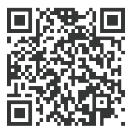
Married to Kate Achter, Bolte moved with Achter to Xavier, Loyola-Chicago and now Detroit Mercy where Achter is the head coach.
Bouncing around for years, the couple is now settled in Detroit with their two children.
I could not let that part of me get proven right. Alcoholism, mental health and my sexuality were the three reasons why I stepped away.”
- TRACY ROLLER, Former Ball State women’s basketball head coach
“The conservative states and states where the political climate is different, we hesitate for places like that,” Bolte said. “My wife has been strategic in thinking about her options. There are certain jobs she would never go after even if they are open or desirable. That is just the reality of it.”
Living in a progressive Chicago climate for six years, Bolte said her views on acceptance across the nation have been “skewed,” but that changes based on location.
“Things took a big swing [in the positive direction] for a while when marriage got legalized,” Bolte said. “I have to say, more recently, we feel a little less like things are so accepting. I think the culture has moved forward, but I also think it has taken a slight step back.”
From city life in Chicago to living in a suburb of Detroit, Bolte said they are the only gay couple in the neighborhood.
Corbin described her experience as a Ball State student athlete as a positive one, though she still felt apprehensive about stepping out into the community.
“I thoroughly enjoyed Muncie,” Corbin said. “But it was still a smaller town … and the perception was that you had to be a little bit more careful. Did I feel super comfortable walking down the street, holding my partner’s hand at that time? I didn’t.”
As a Cardinal, Corbin racked up 1,000 career points, 400 career assists and 400 career rebounds. With a key role, identifying as lesbian to her teammates was difficult.
“Not being accepted, potentially, was scary. Especially around all those things I loved so dearly,” Corbin said.
It’s been nearly a decade since Corbin left basketball to pursue career opportunities. With an outside perspective, she said she’s seen acceptance in women’s sports grow. Corbin said famous athletes like Sue Bird, Diana Taurasi and others who are open with their sexuality have created a culture of “normalcy” for LGBTQ+ athletes.
“As that started to happen, I started to see more coaches who were open and had their spouses or partners at their games or listed on the [team]
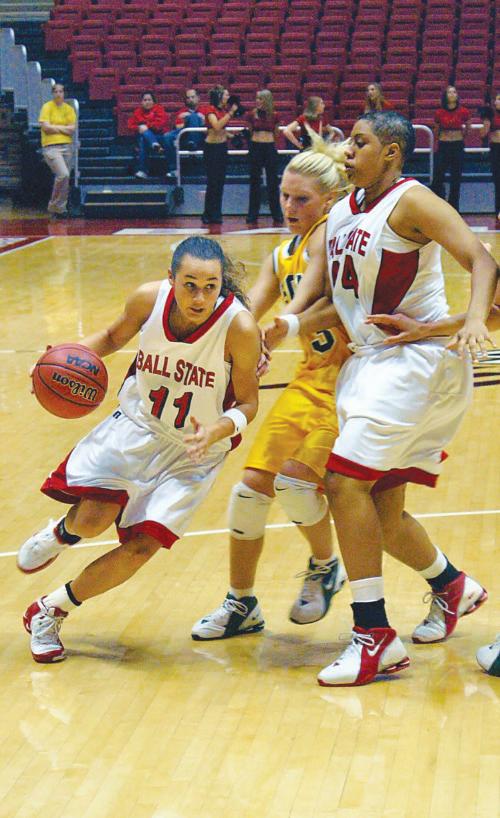
website,” Corbin said. “I believe that was nonexistent at the time I was still playing, and it has changed immensely for the better.”
Contact Kyle Smedley with comments via email at kyle.smedley@bsu.edu or on X @KyleSmedley_.
Contact Elijah Poe with comments via email at elijah.poe@bsu.edu or on X @ElijahPoe4.
Contact Caleb Zuver with comments via email at cmzuver@bsu.edu or on X @zuves35.
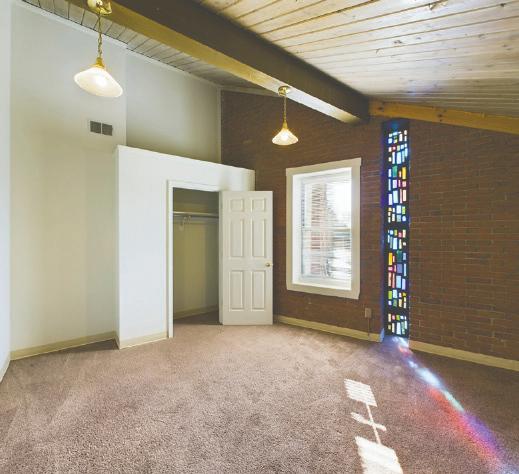








NOW UNDER NEW MANAGEMENT! beaconhillmuncieapts.com | chesterfieldmuncieapts.com | kensingtonmuncieapts.com | (765) 234-3713 Steps from Campus | Recently Renovated* | In unit W/D* | Onsite Laundry | Studios, One, Two, Three and Four Bedroom *In select units
Kelsey Corbin of Ball State women’s basketball
against North Dakota
DNLGBTQ+ Pride 04.18.24 12
dribbles
State Nov. 27, 2005, at Worthen Arena. The Cardinals won the game 65-54. SUE WILDEN, PHOTO PROVIDED






‘The Last Five Years’ at Cave Theatre






Smallbut Mighty Mighty




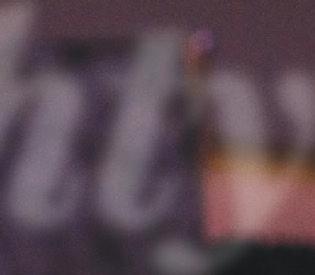
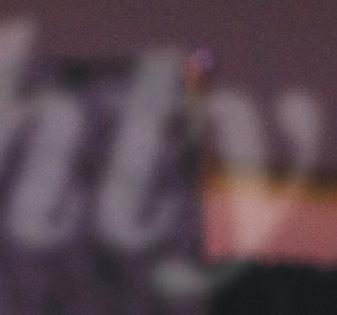
Muncie drag artists are a small but close-knit group full of support.


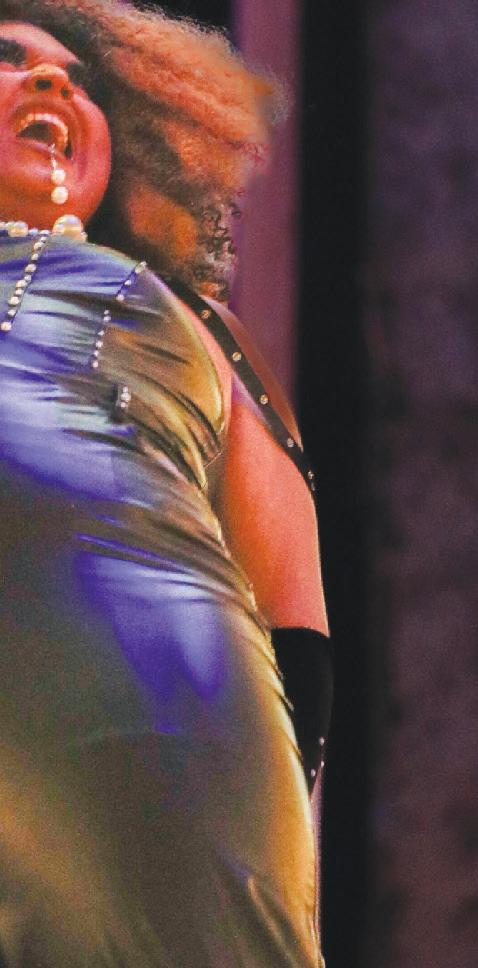
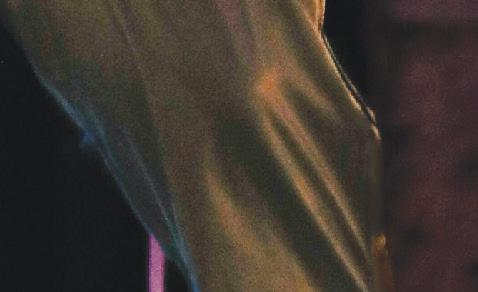
The student performance will be at Cave Studio Theatre April 1720 at 7:30 p.m. and April 20-21 at 2:30 p.m. The musical follows the story of two New Yorkers, Cathy and Jamie, who fall in and out of love for five years. Tickets are $6 in advance and $8 at the door and are available at the College of Fine Arts box office, via phone at 765-2858749 or tix.com.
Minnetrista spring brunch
The unlimited buffet-style brunch will be from 10:30 a.m. to 2 p.m. April 21 in the Minnetrista Museum and Gardens Center Building. Tickets for the event are $30 per person, $15 for ages 3-12, and children 2 and younger are free, with membership discounts applicable. Walk-ins are welcomed, but it’s recommended to pre-register on Minnetrista’s website.
Campus Community Campus
Theatrical circus at Emens Auditorium
The show “Alice: Dreaming of Wonderland,” will be performed at Emens April 24 at 7:30 p.m. The show features international performers from Europe and North America performing different acrobatics with live music and 3D mapping. Tickets for adults cost $2939 and children’s $10-15 depending on seating. Student tickets cost $5 in advance and $10 at the door.
ON BALLSTATEDAILYNEWS.COM: MUNCIE SOUTHSIDE’S ROBOTICS TEAM FOSTERS STEM LEARNING
DNLGBTQ+ Pride 04.18.24 13
Drag performer Celeste Rifé strikes a pose during their performance April 5 at the L.A. Pittenger Student Center. Rifé performed twice during the night. ANDREW BERGER, DN
14
Muncie drag artists emphasize the importance of keeping drag alive in smaller communities.
Hannah Amos, Ella Howell Lifestyles Editor, Associate Lifestyles Editor and Copy Editor
After spending the day cutting hair for those who find themselves in his salon chair, Chandler Skye heads out for the evening, but he doesn’t return straight home.
Instead, he heads to the venue of his next show and finds himself onstage with a full face of makeup, a wig and an eye-catching outfit. In front of the audience, he is no longer known as Chandler Skye. In his shift from the hair salon to the stage, he becomes Aura Aurora, a well-known Muncie drag queen.
“It is the art of female impersonation. Getting to use your body as a canvas and turn yourself into whatever you want,” Skye said. “It’s about being an outcast and something otherworldly. At the end of the day, makeup washes down the drain, a wig comes off. That doesn’t define you as a person, but you can use this outlet to express that inner artistry that we all have within us.”
Skye has been performing in drag shows for nearly seven years, starting when he was 17 in Muncie, his hometown. To keep himself going, he challenges himself not to become stagnant, which grows and evolves with his persona, Aura Aurora. Skye describes the current Muncie drag scene as small and close-knit but still present and loving.
With the Mark III Tap Room closed for renovations, performance hot spots are limited in Delaware County, forcing many to go to locations in Anderson. Shows like Spectrum’s annual spring drag show provide spaces for performers to show off their creativity in the local community.
“Muncie has a special place in my heart,” Skye said. “It’s important, for me at least, to want to keep drag alive [and] to keep people inspired.”
It’s about queer liberation, not just dancing on stage. It’s about fighting for our rights and being the frontline warriors of the gay community.”
- GLINDA B. FIERCE, Muncie drag queen
At events like Spectrum’s annual spring show, artists from different backgrounds and experiences get to grow alongside each other.
“No drag show you’ll ever go to is going to be the same, which is very exciting,” Skye said. “You never know, fully, what to be prepared for.”
Another Muncie drag queen who has made a name for themself is Glinda B. Fierce. They’ve been performing in drag shows since 2017 when Fierce decided they wanted to find a way to use their voice in a fun and creative way. They emphasized that drag is something anyone can get involved in.
“Drag, like any other art form, can be molded and manipulated and changed for any kind of audience. I can do a show at a bar one night and then do a kids’ show the next day at the library because we have range,” Fierce said.
With Ball State University located in Muncie, college students are joining the drag community each year. Chris Navarro is one example of a fresh face in the local scene.
Navarro, a second-year fashion major at Ball State, has been performing in drag for only a few months but feels welcomed among drag performers in Muncie as their drag persona Celeste Rifé.

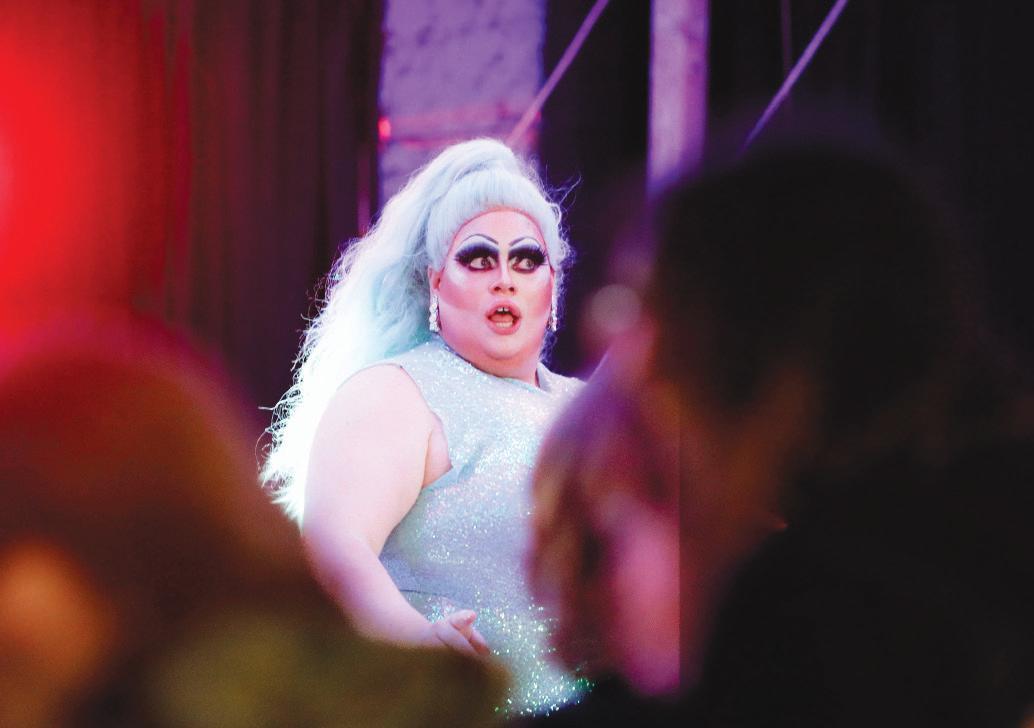
It is the art of female impersonation. Getting to use your body as a canvas and turn yourself into whatever you want.”
- CHANDLER SKYE/AURA AURORA, Muncie drag queen
“It’s a sisterhood — they’ll help you out,” they said. “I just did the thing with Aura Aurora, and she’s from Muncie, and we’re backstage and she’s talking about, ‘Oh let’s hang out sometime. We can rhinestone together, we’ll make costumes and everything and just talk.’ So, it really goes past just doing a show together, and you want to get to know them as well, so it’s more personal.”
Navarro said they feels like a very expressive person outside of drag and has been performing for years, so embracing this new-found passion in their life wasn’t much of a shift. As a fashion major, Navarro wasn’t afraid of the sewing machine and started making their own costumes.

Drag performer Vigor Mortis performs April 5 in the L.A. Pittenger Student Center. Mortis performed to “9 to 5” by Dolly Parton. ANDREW BERGER, DN
Muncie-based drag queen Aura Aurora gives an introduction speech April 5 at the L.A. Pittenger Student Center. Aura Aurora
4See DRAG, 18 DNLGBTQ+ Pride 04.18.24 14

FINDING PRIDE FINDING PRIDE
LGBTQ+ advocates discuss family relationships and the influence on their outlook.

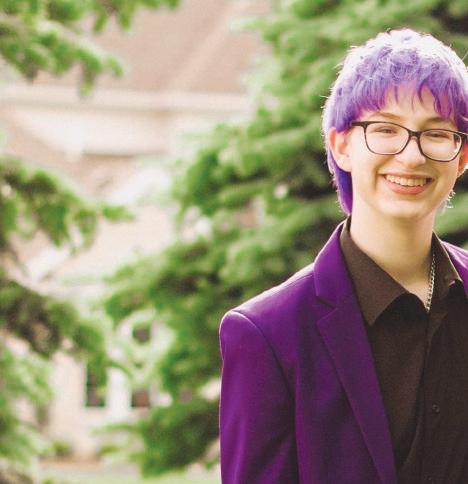






Zach Gonzalez Reporter
Ahug can communicate warmth and love without saying a word. For LGBTQ+ individuals rejected by family members, a hug from Free Mom Hugs staff resembles affection they may not receive from those in their own household.
The nationwide organization was founded in Oklahoma by Sara Cunningham in 2015 with the purpose of empowering the lives of LGBTQ+ members in families and communities. For Indiana state leader of Free Mom Hugs Adrianna Randle, a hug is an emotional connection affirming a safe space between both parties.
“I’ve had people tell me, ‘I’ve not had a hug from my mom in four years since I came out as gay, lesbian or transgender,’” Randle said. “That emotional connection — even if it’s just for that couple of seconds to get a hug, to hear a story, to share a laugh — it’s very important to people.”
Free Mom Hugs provides hugs and other methods of support to people in the LGBTQ+ community who might’ve endured rejection or resentment from someone for their identity. For Randle, in the state of Indiana where they said hate floats around the LGBTQ+ community, they said the power of a hug flourishes human relationships.
“I don’t think I’ve ever heard anybody saying, ‘No, I hate hugs,’” Randle said. “We all thrive on a human connection and being part of a group where that’s what we do: we hug, we listen, we talk, we laugh, we let you know we’re there.”
Randle said the organization also offers different physical contact forms, such as high fives and fist bumps, depending on each individual’s comfort level.
Sometime after joining Free Mom Hugs, Randle’s oldest son came out as nonbinary, and then, six to eight months later, a transgender male.
“It didn’t change the person that my son is, it changed how the world sees him, and I knew I needed to fight for that,” Randle said.
Randle’s younger son is also a member of the transgender community, and Randle themself is agender and aromantic-asexual. Their identity motivated Randle to grow a deeper understanding of the LGBTQ+ community while expanding their role to support LGBTQ+ individuals, such as their family and themself.
“We all should be allies, all of us,” Randle said. “I’m going to be an accomplice; I’m going to step in and be that buffer between what the cruel, cruel world can say and do to you and your tender little heart.”
While Randle said being an ally is a good start, they want to see more people serve as accomplices to the LGBTQ+ community. They said being an accomplice means immersing oneself in what’s going on in the community, empathizing with community members, and doing everything possible to fight for them and LGBTQ+ rights.
“I want to see more people step out of their houses where they can be seen, where they are putting boots on the ground, and standing up for things they know and believe are right,” Randle said. “Standing up for somebody else is what I’m looking for.”
Laura Janney, director of Muncie OUTreach, an LGBTQ+ youth group, was also compelled to expand her knowledge of the community because of family ties. Janney’s son came out as gay to her and her husband when he was young.
“It’s a part of who he is,” Janney said. “We were afraid to tell people because we wanted to protect him. He was only 12 at the time, and we didn’t want him to be shunned or rejected by family.”
As someone who interacts with young LGBTQ+ individuals constantly, Janney’s job is mentoring, listening and being supportive of those learning to accept their identities.
Janney said despite the mixture of political ideology she’s witnessed in Muncie, any advertising of Muncie OUTreach helps boost its impact with the surrounding LGBTQ+ community members.
“I think it’s important to have visibility and to let everybody know there is something here and they’re not isolated,” Janney said.
Muncie OUTreach welcomes any child, even if they aren’t a part of the LGBTQ+ community. Janney said any differences in beliefs regarding the community allow for opportunities in education.
“Although we pride ourselves on creating safe spaces, I’m not sure there is an actual real thing of a safe space. I think it’s more about safe people,” Janney said. “All the kids who’ve been here are ready to cancel this kid because his parents have a confederate flag up, but the reality is it’s a teachable moment.”
Like Janney and Randle, Heidi Buffenbarger, another Indiana state leader for Free Mom Hugs, also has children in the LGBTQ+ community. Her children, one being nonbinary and the other transgender, led her to join Free Mom Hugs to support them and understand why they both identified the way they do.
“The only thing I want is for my children to be happy, healthy and thriving. And I knew if I didn’t support and understand, then there’s no way that they could be those things,” Buffenbarger said. When her older nonbinary child came out, being involved in Free Mom Hugs helped Buffenbarger have conversations with her child to help her understand the impact gender identity had on their life.
“It’s one thing to come out to your parents and say, ‘This is who I am,’ [but] it’s another to be able to have ongoing conversations with your parents about what that means to you and how they feel,” Buffenbarger said.
Buffenbarger said she hears of a mixture of supportive and opposing opinions about the LGBTQ+ community from families, but she mentioned some who may view it more negatively could be open-minded to understanding.
“It’s easier when the family member or the parent doesn’t necessarily embrace their child, but they want to learn, and if they’re open about what that means, then there’s room for growth,” Buffenbarger said. “We want to help explain to parents why it’s not wrong ... That’s what Free Mom Hugs is all about. Regardless of who you are and how you identify, you love everybody.”
Contact Zach Gonzalez with comments via email at zachary.gonzalez@bsu.edu
DNLGBTQ+ Pride 04.18.24 15
Heidi Buffenbarger and her child Alyx pose for Alyx’s senior high school photo May 15, 2022. Buffenbarger is an Indiana state leader for Free Mom Hugs. ASACIA NORRIS, PHOTO PROVIDED
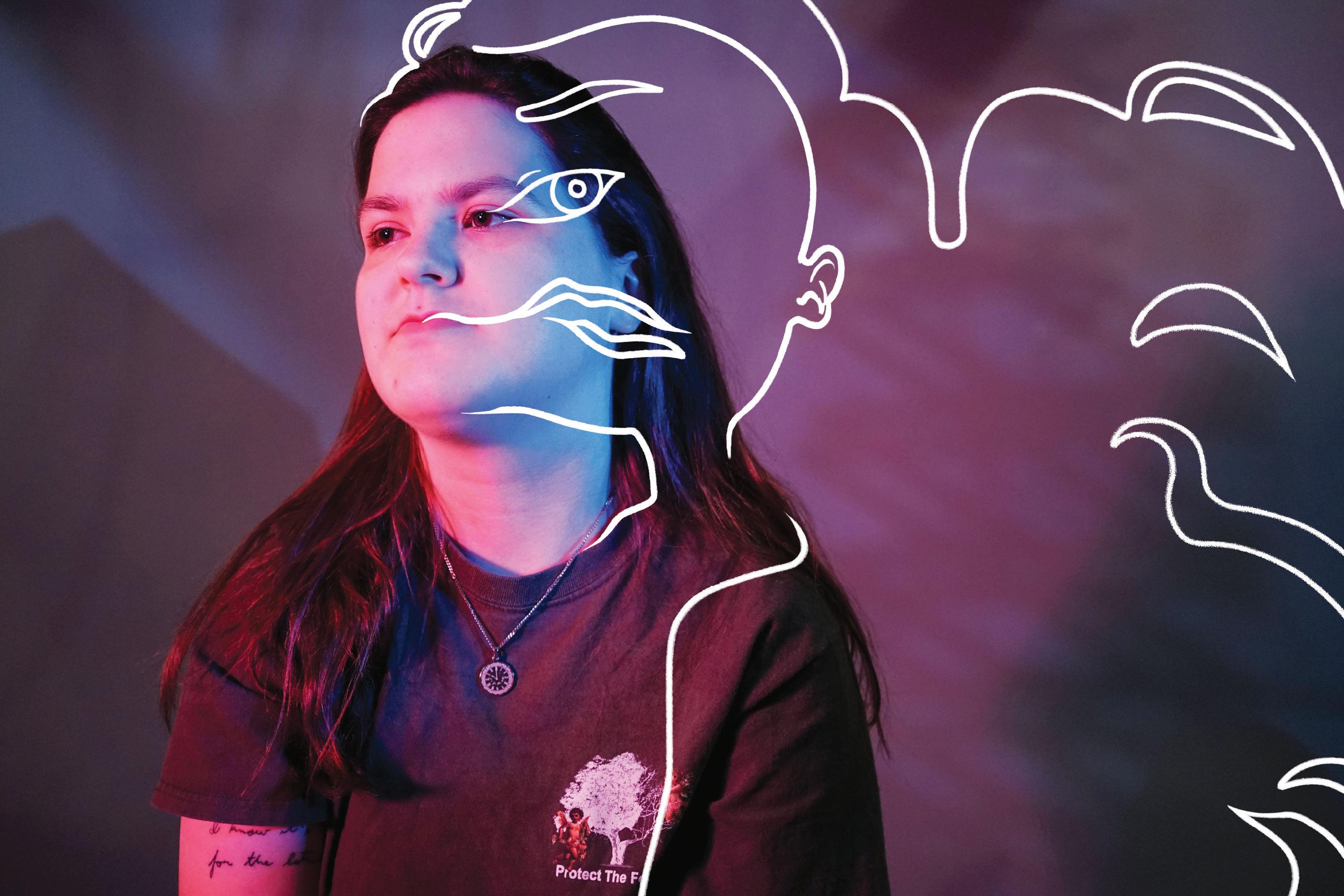
DNLGBTQ+ Pride 04.18.24 16
BINARY ON BALLSTATEDAILYNEWS.COM: BECOMING A TEACHER IN THE CLASSROOMS I WAS A STUDENT IN KATE FARR, DN PHOTO MEGHAN HOLT, DN PHOTO ILLUSTRATION
THE OF THE WEIGHT

The
gender
binary withholds the actuality of nonbinary identities.

Trinity Rea

Trinity Rea is a second-year journalism major and writes “Bury the Hatchet” for the Daily News. Their views do not necessarily reflect those of the newspaper.
There’s been a crippling weight on my shoulders for as long as I can remember. It wears me down and diminishes me. It conforms and restricts me to be something I’m not.
When I was younger, I learned to escape this weight by changing different parts of my identity. As a five-year-old, I told my family to call me Tom — and no longer refer to me as Trinity — because I was a “tomboy.”
I curated a collection of boys’ T-shirts, hobbies and mannerisms.
I dressed up as “Darth Vader,” “Wolverine” and “Bumblebee” for Halloween. I begged my parents to plaster an “Incredible Hulk” decal on my wall while starting karate classes and beginning to fish with my dad and opa.
I hung out with boys in elementary school for as long as possible until I slowly fizzled out of their group during the awkward, but typical, separation of genders in middle school.
From there, I fell back into what was curated for girls my age, reassumed the name Trinity, and became influenced by my peers and family about how to dress. I began to wear the “girly” clothes my family members bought me and stopped playing basketball with boys at recess.
For a while, I tried to be comfortable within the conformity and bounds of stereotypical femininity, but it never stuck. I again began to feel the weight.
This time, it felt inescapable.
Lacking a part of the identity that made me whole — the complexities of myself that adhered to the more binary category of masculinity — reduced every part of me to a level of unimportance.
There was no space for me in the gender binary — in the classification of only two genders. It was something I was unsure how to articulate but felt my whole life.
Nearly a quarter of my life had passed by the time I gained the confidence to put into words how I’d been feeling. It took until March 2023, at nearly 19 years of age, for me to finally find a term for someone like myself — someone who didn’t fall into a category of either male or female.
I was afraid of what people would think of me and, honestly, afraid of the fact that recognizing my identity might change me and the fundamentals of my existence up to that point. I knew I was nonbinary, but due to the stigma surrounding it, I didn’t want to accept that. It’s been a little more than a year since I came out to close friends but still, this acceptance and further
recognition of my identity has not been enough to make me feel whole. I spent my entire life searching for a definition of what I’ve felt, and it hasn’t been enough because of what others think.
I don’t fit within the arbitrary standard people give nonbinary individuals in terms of how to look or act, which causes me to question my feelings and confidence in how I’ve grown accustomed to identifying.
Within this standard, there’s a multitude of expectations regarding appearance and behavior. These expectations are then applied to people like me. But just because my gender identity is nonbinary does not mean I have to cut my hair short or dress exclusively androgynous.
While I know this, people around me have yet to accept that. Every day, at least one person will make an assumption about me either based on my outward presentation or based on preconceived notions of being nonbinary.
Just because my gender identity is nonbinary does not mean I have to cut my hair short or dress exclusively androgynous.
My identity acts as a token — something allusive or to be marveled at. I’m a “nonbinary person” to people instead of a “person who identifies as nonbinary.” My gender comes before the fact that I’m a human being.
Being consistently seen as this figure of expectation and constant clarification is draining.
According to a survey issued by TransPulse Canada in 2019, 59 percent of nonbinary people are misgendered daily. The same survey found only one in eight people were able to correct others when they were misgendered.
I’m misgendered daily by “friends” and coworkers in passing conversations. Recently, as I’ve stepped into myself more comfortably, I have begun to correct them. However, when I first came out, I didn’t for a long time. This was out of plain, old fear. While the awareness of nonbinary people is increasing, it has not grown alongside general acceptance and recognition.
A survey conducted by the Pew Research Center in 2022, which aimed to dissect experiences and challenges faced by transgender and nonbinary adults, found that this fear I described is common.
The majority of survey participants noted that whether or not they disclose their identity as a trans or nonbinary individual depends on whether or not they feel safe. The survey also noted a big factor was whether or not the information about one’s identity was necessary.
Sometimes, I let people believe my identity is what they mistake me for. I’m comfortable with who I am, and I’ve learned that fighting to make someone understand is not always worth it.
In some situations, I feel as though my identity must be suppressed because it isn’t “necessary.” I’m almost constantly referred to by traditionally female pronouns based on outside perceptions of my body and the fact I was designated female at birth. I’ve even had people cancel interviews if I place my pronouns in my email signature but agree during a phone call when they hear my voice.
It’s so frustrating having to conform to something I’m not. I’m expected to be a man or a woman, not something completely removed from the binary.
My identity exists outside of the gender binary, an idea most cannot — or have yet to try to — process.
In and outside of the queer community, the nonbinary identity is consistently attributed to being a “third gender,” a believed notion that completely erases the actuality of one’s identity.
Additionally, most people don’t consider the nonbinary identity to be a trans experience, even though the word transgender refers to someone who does not identify with their assigned gender at birth.
By erasing this part of the nonbinary identity, it again isolates us within a separate, third category.
Diminishing the nonbinary identity, either by a refusal to understand it or by misunderstanding it to be something it is not, erases the experiences of many like myself. Although I am confident in my identity, misplacing the actuality of it leaves me in limbo.
Myself and my identity are purely dependent on what I feel; but how am I supposed to feel confident and whole in that if the rest of the world around me does not see me for who I am?

The short answer is I don’t, and I probably never will, unless we as a society can begin to work toward an overall acceptance for trans individuals. This acceptance has to include nonbinary people and showcase the true reality of that identity not as a third gender, but something outside of the gender binary entirely.
Acceptance can start with acknowledgment since trans and nonbinary people are not going anywhere. The sooner we accept this fact, the sooner people like me will understand what it means to feel whole.
Contact Trinity Rea with comments at trinity.rea@ bsu.edu or on X @thetrinityrea.

DNLGBTQ+ Pride 04.18.24 17
Associate News Editor,
the
“Bury
Hatchet”
DRAG
Continued from Page 14
“Recently, every single time I’ve performed, I’ve worn something different. It honestly seems like every single week I’m coming up with a new idea for an outfit and making something new — coming up with an idea, buying fabric, doing something differently,” Navarro said. “Honestly, it’s a weekly basis when I’m making another costume.”
Traveling drag artist Fluxx De’Luxx, originally from Dayton, Ohio, performed at Spectrum’s annual show and got a glimpse of the Muncie drag community.
While living in the Netherlands for threeand-a-half years, De’Luxx started their own drag house, Haus of 4D, and they honed their craft in the country before returning to the U.S. from the Netherlands.
De’Luxx uses drag to help grow and learn about their gender fluidity.
“The relationship between drag and gender is pretty, pretty obvious,” De’Luxx said. “It’s a platform to experiment, and for me, my drag persona very much reflects the relationship I have with my gender outside of drag, which is very fluid and label-less.”
Another personal aspect drag helps De’Luxx explore and work through is the fact that they’re neurodivergent.
“I learned a lot with my former drag house, [like] figuring out how we craft the space that is most accessible to people with all sorts of different sensory and neurodivergent needs,” they said.

The Spectrum show was their first performance in the U.S. since they moved back. De’Luxx has started doing more traveling gigs than the home gigs they were accustomed to in the Netherlands. What they think makes home gigs so special is that one’s respective “queer community” gets to see the artist’s growth and evolution in-person through the performances, compared to seeing growth online.
However, Skye said to support local drag artists, simply following them on social media is a big step.
“It’s the biggest thing to do, to have our backs on there, because everyone’s virtual voice matters, especially nowadays,” Skye said. An online presence also enables artists and supporters to branch out into the larger community. The art of drag is versatile and can be an outlet for anyone. Understanding the roots and what it means to be a drag performer is an important part of the culture.
“Drag belongs to Black, trans women first,” Fierce said. “It’s about queer liberation, not just dancing on stage. It’s about fighting for our rights and being the frontline warriors of the gay community. We’re the ones at the front yelling and screaming the most, so if you’re not ready to be political, you shouldn’t be a drag queen.”
Contact Hannah Amos via email at hannah.amos@bsu.edu or on X @Hannah_ Amos_394. Contact Ella Howell with comments at ella.howell@bsu.edu.
DREAM
Continued from Page 03
“Here I am in so much pain I can’t walk and alone in this hospital room at night,” Greyhawk said. “This is why I’m [choosing adoption]. I can’t do this alone … There will be two of them … and they have wanted to be parents for so long.”
There was a two-week period when the baby couldn’t leave Indiana to go to the adoptive father’s home state. While they stayed with the baby in a hotel room, Greyhawk went back to class.
“I felt hollow,” Greyhawk said. “When you have a baby inside of you, you feel warm. You’re carrying a furnace on your tummy. It was the beginning of November, and I just remember feeling so cold.”
When the paperwork was settled, the father notified Greyhawk it was time for her child to leave Indiana. Greyhawk and a friend went to the hotel to say their goodbyes.
“Maybe, someday, I’ll get to have kids of my own,” Greyhawk said. “This was my dream deferred and their dream realized.”
The Dream In Motion
Shaylee Vice and Sam Grim have been married since December 2022. The two recently began seeking medical insemination treatment after a miscarriage from trying at-home insemination.
“I want that experience of birthing my own,” Vice said. “Sam, specifically, she’s wanted children but not to carry.”
After discovering the cost of medical insemination and fertility treatments was similar to the cost of at-home treatments, they began to seek medical fertility treatments.
According to Bundl Fertility, the average cost of in vitro fertilization (IVF) in Indiana can range from $12,000 to $15,000. According to the National Infertility Association, Indiana does not have insurance coverage for IVF treatments, however, some private insurance companies like Anthem Blue Cross Blue Shield or UnitedHealthcare offer variations of coverage for IVF treatments, according to Midwest Fertility.
“Families all look very different. Some families have a mom and no dad or a dad and a mom … It’s all different, and it’s OK,” Vice said.
The Dream in Reality
Greyhawk said her family looks different than most. She is still in very close touch with her daughter and her fathers. She visits at least once a year and still gets Mother’s Day crafts made in elementary school.
Greyhawk is still called “Mom.”
For aspiring parents like Vice and Grim, the “village” of support for their hoped-for baby is the most important thing.
“Yeah, they’re gonna have two moms, but there are masculine-presenting [and] masculine-
identifying people in our family and our friends that they are going to be around,” Vice said.
Growing up in a world full of hate is one Vice said is a reality for kids, especially kids who are members of the LGBTQ+ community or have family members who are.
However, Vice pointed out that this is not any reason to prevent LGBTQ+ families from having kids.
According to research from a team at the University of Kentucky, LGBTQ+ parents “demonstrate flexibility, creativity and intentionality,” all of which are related to a child’s resilience and positive outcomes.
Additionally, the study does point out that children of LGBTQ+ parents may face more teasing or bullying, however, “they involve or confer unique benefits or skills that cultivate resilience,” according to the study.
“We always say, ‘Do no harm, but take no shit,’” Vice said. “Our children will learn [to] hate from the world. We will not even teach them to hate individuals who are homophobic because we don’t teach hate.”
Contact Olivia Ground via email at olivia. ground@bsu.edu or on X @liv_ground_25.
Read the full story online. ON BALLSTATEDAILYNEWS.COM DNLGBTQ+ Pride 04.18.24 18
Drag performer Vigor Mortis performs April 5 in the L.A. Pittenger Student Center. There were ten performers in total for the night. ANDREW BERGER, DN
& Sudoku



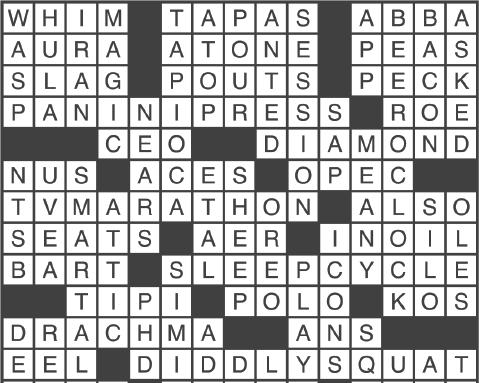







puertovallartamuncieonlineorder.com visit us at 509 S. TILLOTSON AVE. or order online! FRESH, FLAVORFUL Authentic
DNPuzzles 19 04.18.24 SOLUTIONS FOR APRIL 11 ACROSS 1 Goal of much medical research 5 Like a baby with pudding, probably 10 Floor model, e.g. 14 “That’ll be the day!” 15 Jazz great Earl “__” Hines 16 Woeful word 17 *Consider carefully 19 Home in the sticks 20 Fluster 21 *Transformative beauty treatment 23 Fancy timepieces 26 Luthor of DC Comics 27 Stand-up comedian Shaffir 28 Undivided 29 Removes soap from 31 Tic-__-toe 32 Maytag sister brand 34 Tusks, e.g. 36 Plan of action, as “initially” found in the answers to the starred clues? 40 Writer Sir Arthur __ Doyle 41 Still-life pitchers 42 GOP gp. 43 Bearded spring blooms 46 Many an email attachment 49 Earlier 50 Intentionally mislead 51 “Don’t let that woman get away!” 54 *Talk back (to) 57 Garlicky mayonnaise 58 Angry 59 *Divvy up 62 Rae of “Insecure” 63 Industry honcho 64 Surrender, as territory 65 __-do-well 66 “You __ sweet!” 67 Potato buds DOWN 1 Chevrolet that will be discontinued in 2024 2 Applied to 3 Brain-breaking question 4 Paperless option for taxpayers 5 Curator’s deg. 6 Take in 7 Women in __: educational advocacy org. 8 Sandbars 9 Big Apple MLB player 10 Paul of “The Batman” 11 Like some beachside homes 12 GranTurismo automaker 13 Bird with a powerful kick 18 __-Mex cuisine 22 Celeb who’s no longer in the limelight 24 Important ages 25 Chinese: Pref. 30 Kitten-lifting spots 32 Oral health org. 33 German city that hosted the 1972 Summer Olympics 35 Napkin corners? 36 Ferretlike carnivore 37 Proceeding as planned 38 Lambs’ moms 39 Take a break 40 Adds to an already full suitcase, say 44 Saucer-shaped vacuum 45 With trepidation 46 “Nuts!” 47 Intentionally mislead 48 Steak __: bistro dish 52 Rowboat blade 53 Component 55 Run like heck 56 Cab charge 60 Letters sent in emergencies 61 Game with colorful cards
Crossword












































 Meghan Holt Visual Editor
Meghan Holt Visual Editor
































































































